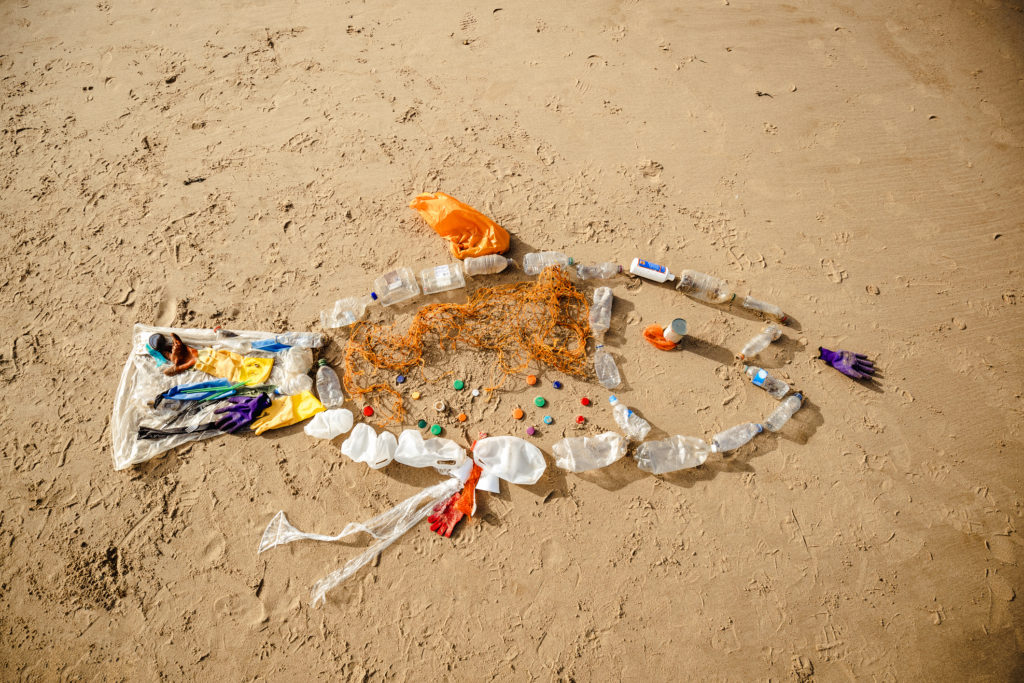How Does Trash End Up In Our Ocean?
September 9, 2019

Ever wonder how trash ends up in our waterways and oceans? You don’t have to look far for the source. In fact, 80% of the trash found in the ocean comes from land sources such as packaging. The top marine pollutants are cigarette butts, food wrappers, bottle caps, plastic straws, water bottles, bag and cutlery.
Main Sources of Trash in the Ocean
- Litter Bugs: If someone litters, the trash can end up in our storm drains. The storm drain system is not treated, so any trash that makes it to the drain will pollute our creeks, rivers, and the ocean.
- Gone with the Wind: When trash and recycling bins are not properly closed, waste can be blown away by the wind. This is especially true for light weight items like plastic bags and food wrappers. Once these items are in the environment, rain or runoff can drag them into our storm drains and eventually our ocean.
Even if you live miles from the coast, all our actions impact the health of our waterways. The most effective way to prevent trash from polluting our oceans and waterways is to stop it at the source.
Trash Pollution Prevention
Each of us has the power to stop trash from getting into our waterways. Pledge to do at least one of the following (bonus points for doing more!):
- Always secure the lid on trash and recycling bins
- Dine in to reduce waste from to-go containers
- Pack a waste-free lunch with reusable baggies or food containers
- Bring a reusable water bottle wherever you go
- Avoid heavily packaged food
- Recycle and reuse products whenever possible
- Always throw cigarette butts in a designated ash tray
- Spread the word! Talk to your friends and family about how you can all stop pollution in your everyday life

What About the Trash Already in the Ocean?
Now that you have pledged to prevent pollution you may be wondering what you can do to help with the trash that is already in our waterways. One way is to take part in the biggest annual cleanup in California! Every September, California Coastal and Inner Coastal Cleanup Day draws volunteers from across the state to remove debris from beaches, creeks, rivers and lakes. Join the 60,000 people cleaning up California in the upcoming 35th Annual California Coastal and Inner Coastal Cleanup Day on Saturday, September 21! Visit the Orange County Coastkeeper to find the nearest cleanup site to you!
Someone, some country, some business is dumping trash into the oceans, this much can not accumulate from windblown debris or litterbugs on the beaches.
H2OC Stormwater Program
Hello Laurie, we appreciate your comment. Since everything that flows into our storm drains goes untreated into our waterways, it is unfortunately one of the biggest sources of pollution. This pollution can come from many different places, like vehicles, farms, uncovered bins, and more. To learn more about pollution in our ocean, go to: https://www.noaa.gov/education/resource-collections/ocean-coasts/ocean-pollution. We hope you have a great day, and let us know if you have any questions!